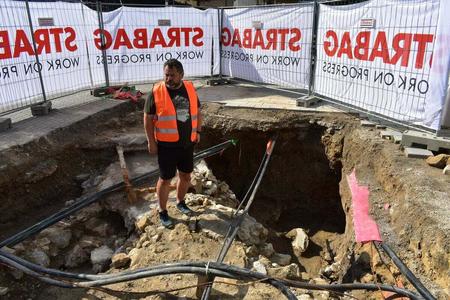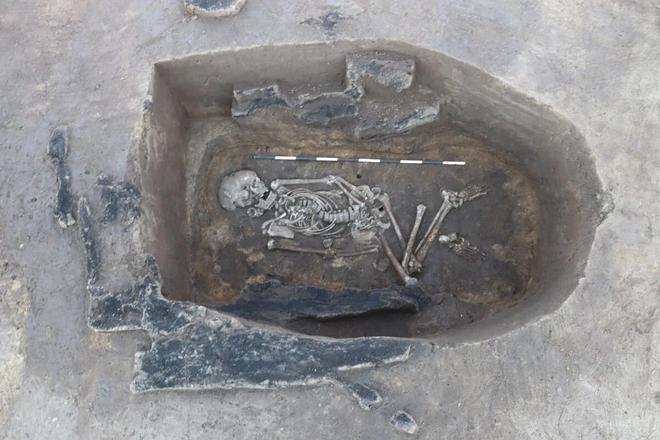The Slovak-Polish archaeological team managed to make an extraordinary find in the village of Hatalov, eastern Slovakia, in the locality of Ridziny.
While researching mound embankments, they discovered the very well-preserved skeletal remains of a young man aged 16 to 18, who, according to archaeologists, was a member of the oldest Indo-European population of the Pit Grave culture from the period between 3300 and 2600 BC.
Research in Hatalov presented the first indisputable proof of the presence of these people in the territory of what is today Slovakia.
As reported by Katarína Gáliková from the Communication and Media Department of the Office of the Slovak Academy of Sciences (SAV), experts from the Institute of Archaeology of the Slovak Academy of Sciences, in cooperation with colleagues from the Polish Academy of Sciences, are investigating steppe influences in the Carpathian region in the third millennium BC from 2021.
Burial mound and skeletal remains found
Archaeologists focused on several pre-characterised cairn embankments in the landscape of the Východoslovenská nížina (East Slovak Lowland) and have examined five of them so far.
Research of the embankment near Hatalov began this year, while the excavation work was preceded by a non-destructive geophysical survey, which confirmed the anthropogenic origin of the embankment and specified its parameters.
"The mound originally had a diameter of 22 metres, was bordered by a channel up to four metres wide, and in its centre there was a burial pit. In addition to the skeletal remains, we found a charred wooden structure in the vicinity of the grave and partly in its filling, the purpose of which was to cover the grave pit," said Eva Horváthová from the Archaeological Institute of the Slovak Academy of Sciences.
Nomads
When dating the find, experts clearly agreed that it was representative of the so-called social elite pit culture.
This is confirmed not only by the extent of the mound embankment, but also by the construction of the grave pit with wooden elements, the method of laying the dead in a supine position with bent legs at the knees pointing upwards, and the occurrence of red dye near the body of the buried.
The original territory of this population was located between the Don and the Volga rivers, from where they gradually moved along the Danube and Tisa rivers to the Pannonian Plain.
These tribes practised a nomadic way of life, were led by chieftain groups, and their economy was based on animal husbandry, fishing and gathering. They used wheeled carts for transportation.
"DNA studies of bone samples of pit culture individuals indicate that this society caused a change in the genetic structure of the population in Europe," emphasised Horváthová.

What the research revealed
The research also uses the most modern natural science methods, such as molecular genetics, radiocarbon dating, the isotopic analyses of strontium, oxygen and nitrogen. Based on them, it will be possible to determine the resettlement during the life of the examined individual and the composition of its diet.
"The data obtained in this way will help us to better assess the archaeological material from the examined mounds, and will be useful in solving broader geographical and cultural topics," said Horváthová.

 The Slovak-Polish archaeological team managed to make an extraordinary find in the village of Hatalov, eastern Slovakia, in the locality of Ridziny. (source: SAV)
The Slovak-Polish archaeological team managed to make an extraordinary find in the village of Hatalov, eastern Slovakia, in the locality of Ridziny. (source: SAV)
 (source: sav.sk)
(source: sav.sk)